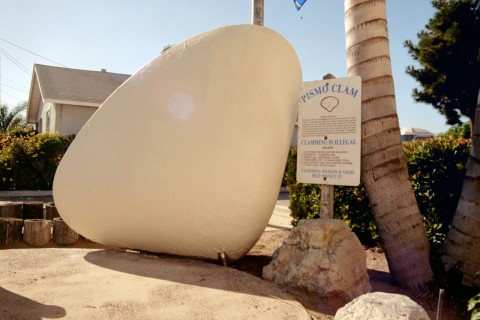
Clam claims oldest animal record
Ian Sample
o Ian Sample, science correspondent
o Guardian Unlimited
o Monday October 29 2007
A clam that lived on the seabed in the frigid waters off Iceland's north coast has been hailed as the longest-lived animal ever discovered.
The mollusc, which is thought to have lurked beneath the waves until at least the age of 405, would have been a juvenile when Galileo picked up his first telescope, Hamlet was first staged and the gunpowder plot failed to blow up King James I.
The Arctica islandica clam was plucked from 80m-deep water by researchers at Bangor University in Wales, who were dredging the north Iceland shelf for the creatures. By studying their shells, the scientists hope to learn how the marine environment has changed in recent centuries.
The clam was alive when it was brought to the surface, but at that point, the researchers had no idea how old it was. Only after cutting through the shell and counting annual growth rings under a microscope did they date the mollusc to between 405 to 410 years old.
"Its death is an unfortunate aspect of this work, but we hope to derive lots of information from it," said Al Wanamaker, a postdoctoral scientist on the university's Arctica team. "For our work it's a bonus, but it wasn't good for this particular animal."
Marine biologists are unclear why the particular species of clam, Arctica islandica, is so long-lived. According to the Guinness Book of Records, the current claim for the oldest animal goes to another Arctica clam that lived for 220 years, though an unofficial record is held by yet another that lived to 374 years old.
Dr Wanamaker said he believed the clam had survived so long because fisheries and predators were so few in the region. In some parts, clam populations have been wiped out through overfishing, while marine predators, including cod, seals and wolf fish also take a hefty toll.
Chris Richardson, a member of the team, said further studies of the clams might shed light on ageing. "If, in Arctica islandica, evolution has created a model of successful resistance to the damage of ageing, it is possible that an investigation of the tissues of these real life Methuselahs might help us to understand the process of ageing," he said.
The clams are born as larvae which drift through the oceans until they settle on to the seabed and begin to grow shells. Unlike scallops, they cannot propel themselves, but burrow down into the sea bed where they filter and feed on a constant rain of nutrient-rich phytoplankton.
"It's a mind-boggling amount of time to be sat there doing that," said Dr Wanamaker.
The project was part of a broader EU programme called Millennium, which seeks to understand changes in climate over the past 1000 years. The researchers can interpret how the ocean conditions varied by looking for changes in shell growth, which are affected by seawater temperature, salinity and availability of food.
The research team believe they may have older clams in their collection that have yet to be dissected.
"It's quite possible others are out there in the water that are 600 years old," said Dr Wanamaker.
· This article was amended on Monday October 29 2007.
No comments:
Post a Comment